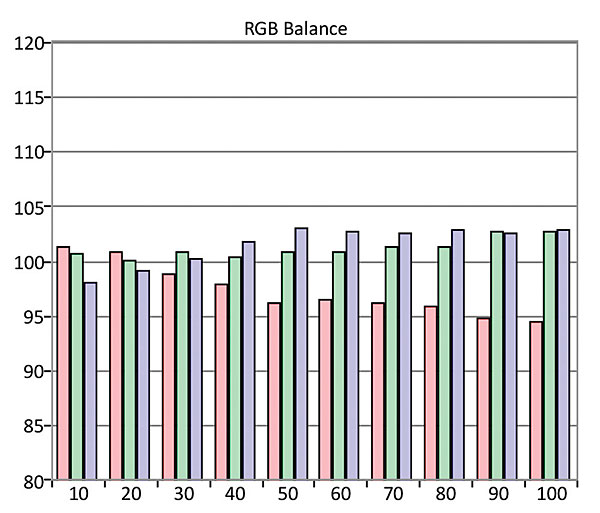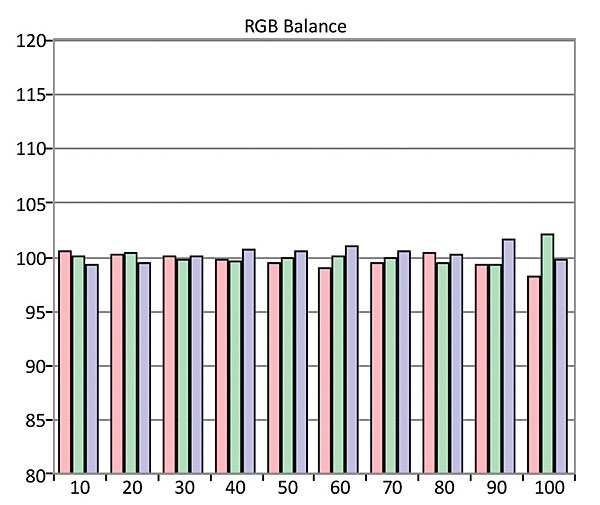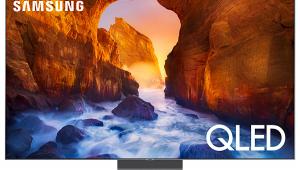Hi. Great review. I enjoy reading your articles and website every day. Say, I'm not familiar with the movie (?) shown in the first screen image in the "At a glance" section. Can you tell me the name of the movie? Looks like I great demo disc. Or is it just a marketing image? Thanks.
Hisense 65H9D Plus LCD Ultra HDTV Review Test Bench
Measurements were made with SpectraCal CalMANsoftware, Photo Research PR-650 and Klein K-10A color meters, a Murideo pattern generator, and an Oppo UDP-203 UHD Blu-ray player.
1080p/SDR
Full-On/Full-Off Contrast Ratio: 44,000:1
In the Calibrated picture mode, Backlight control on 65, Brightness on 50, Contrast on 30, and Gamma on 2, the peak white level measured 44 ft-L or 150 nits and the black level, at center screen, 0.001 ft-L, resulting in the contrast ratio shown above. With a pause bug from the Oppo player activating the back-light, black level increased to 0.008 ft-L, reducing the contrast ratio to 5,500:1—a more realistic figure with program material.


In the Low Color Temperature setting, at the peak white level shown, Delta Es for the SDR pre-calibration grayscale from 20% to 100% ranged from 3.53 to 7.62. Post-calibration, the Delta Es ranged from 1.22 to 7.6, the latter at 50% brightness. That high error reflects the set’s low gamma, which ranged from 2.28 at 90% to as low as 1.86 at 70%. SDR gamma should ideally follow the BT.1886 standard (roughly 2.4), but none of the set’s fixed gamma settings bore improvement. The x/y coordinates for the white point were very close to the desired values across the brightness range .
As described in the text, calibrating the primary and secondary colors using the set’s Color Tuner CMS controls yielded a poor visible result with a pronounced shift to green. After defaulting to the out-of-box settings, the color point Delta Es were all below 2.76, except for yellow, at 5.1.
UHD/HDR
In the HDR Theater picture mode, the Hisense’s full-on/full-off HDR contrast ratio was a maximum of 8,583:1, full screen peak white measured 412 nits and the black level 0.048 nit. Using a 10% window, the peak brightness measured 328 nits, dropping the contrast ratio to 6,833:1. Counter-intuitively, as the percentage of the screen filled by 100% white increased, so did the measured peak white level, to the maximum of 412 nits.

In the Color Temperature Low setting, with peak white level of 328 nits (with a 10% white window), the pre-calibration grayscale Delta E from varied from a minimum of 1.6 to 15.4 (at 60% brightness). Post-calibration, the Delta Es ranged from1.7 to 12.8 (again, at 60%). The 60% level of the set’s 10-step White Balance adjustments did nothing to correct for this, even at its maximum setting. Apart from that, the Hisense tracked HDR’s PQ gamma standard as closely as any set we’ve yet seen.
In HDR, the Hisense performed reasonably well on the Rec. 709 (HD) standard color gamut at a full range of luminance levels. It also largely acheived the equivalent P3 gamut points within the UHD format’s Rec.2020 envelope, though it fell a bit short on the extremes, with the most serious deviations in magenta. P3 is the starting point used to date for mastering all HDR-enhanced Ultra HD Blu-rays we know of.—TJN
- Log in or register to post comments


Starring Tom Cruise. Not a bad flick (I liked the 1999 version with Brendan Fraser and Rachel Weisz much better) with some cool special effects. It makes a pretty good demo disc as the production values are quite high. The actress who plays the mummy, Sofia Boutella, is also in Atomic Blonde, which I thought was very good and is also demo worthy (the soundtrack is definitely very cool).




































































